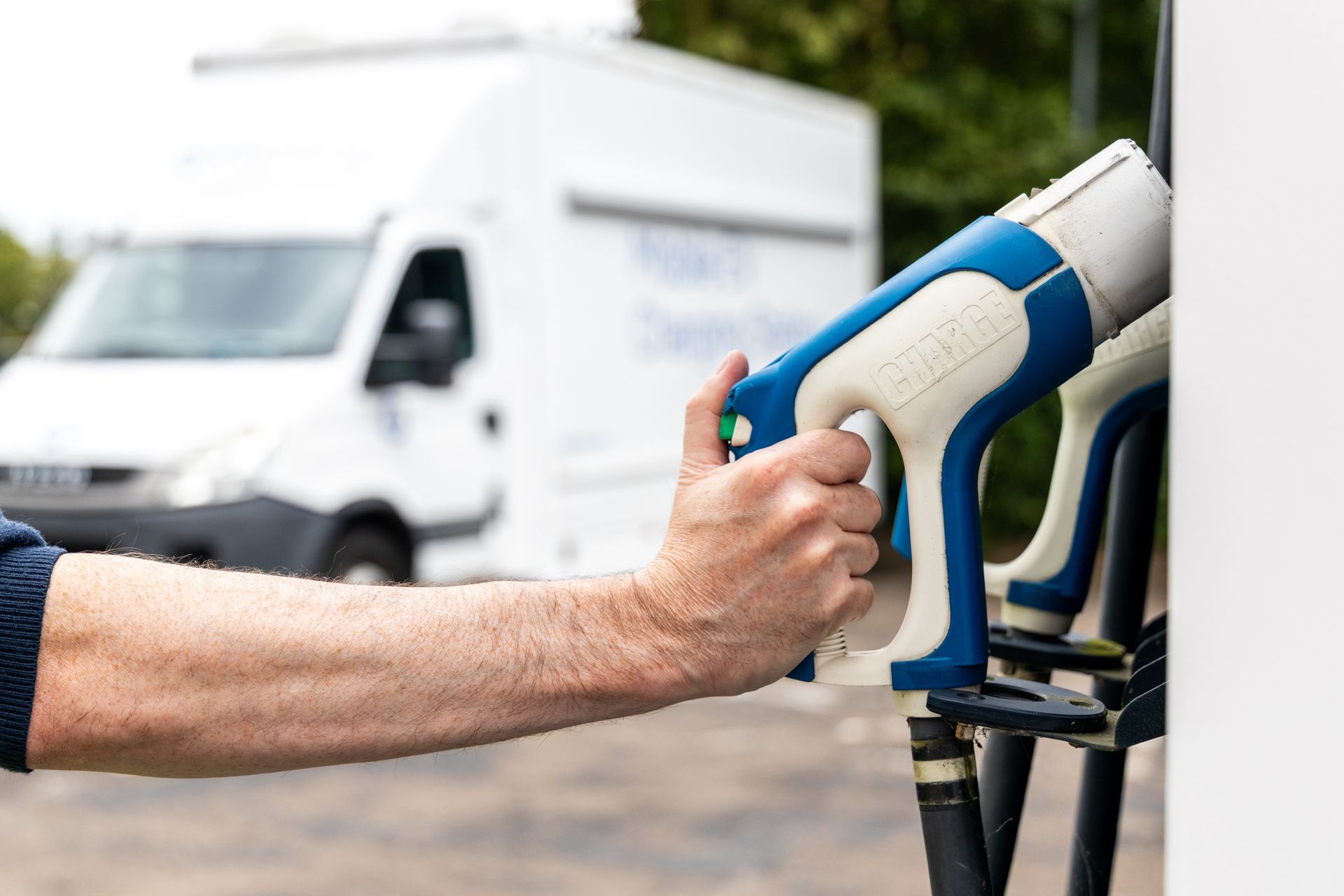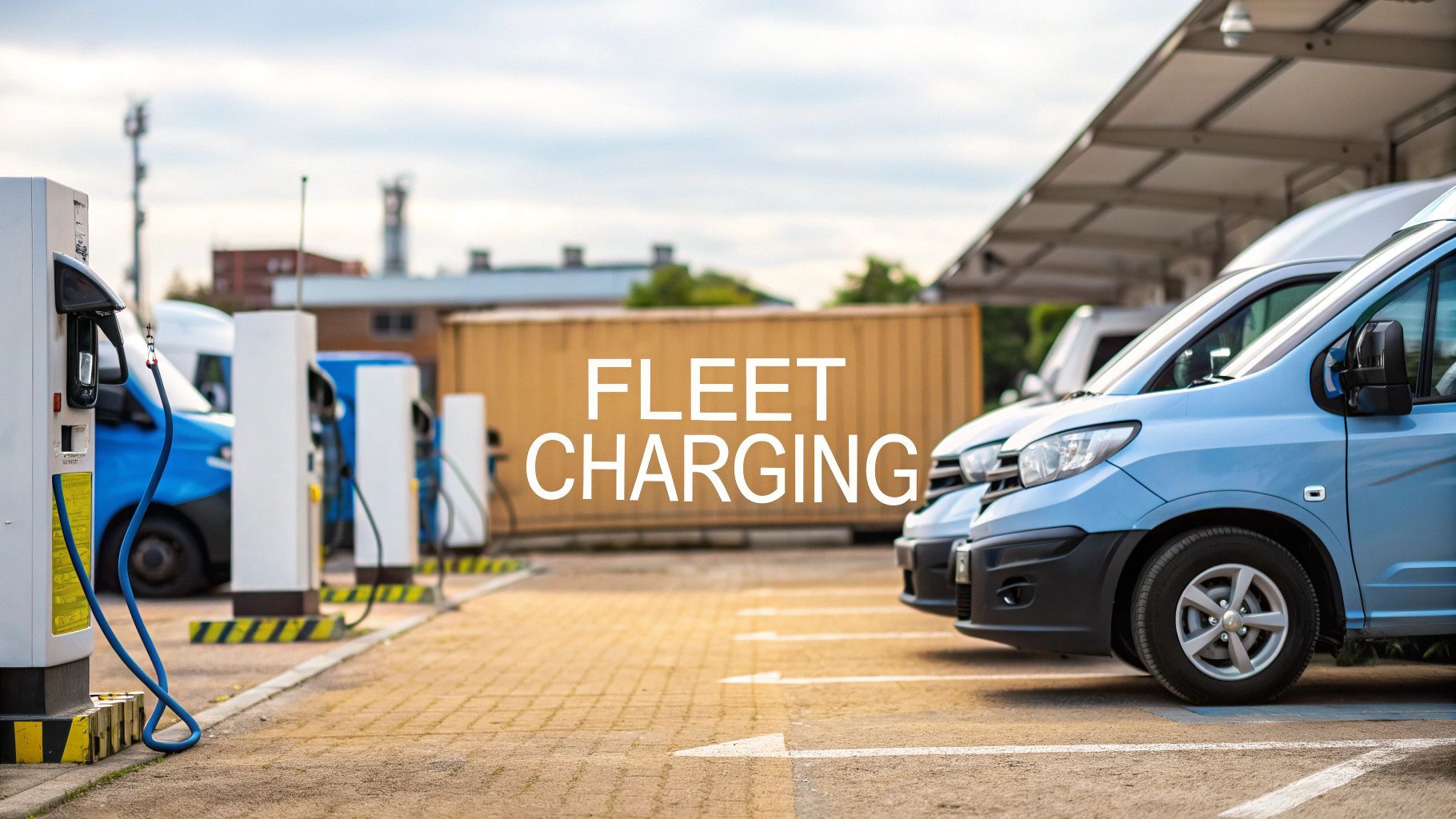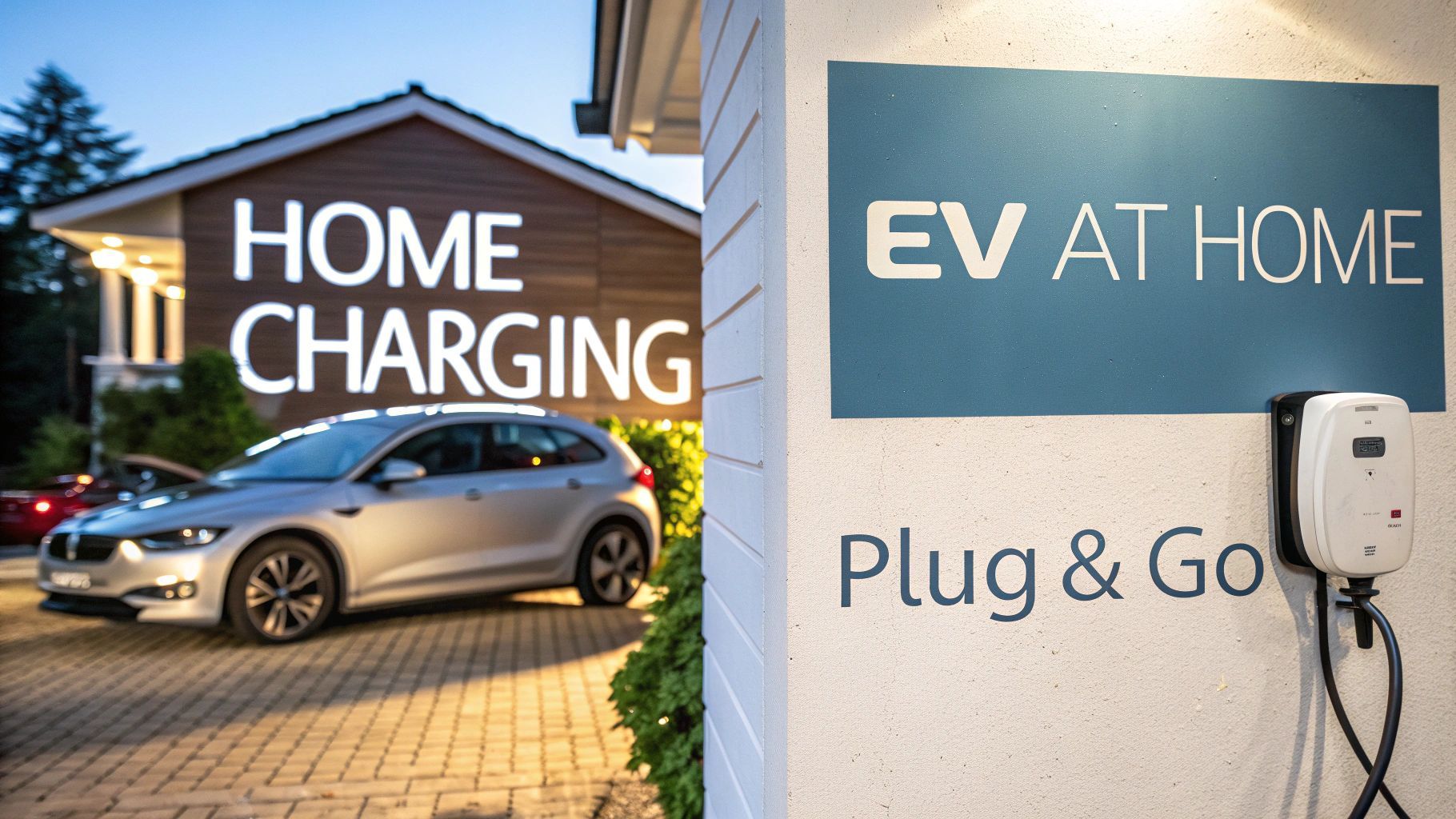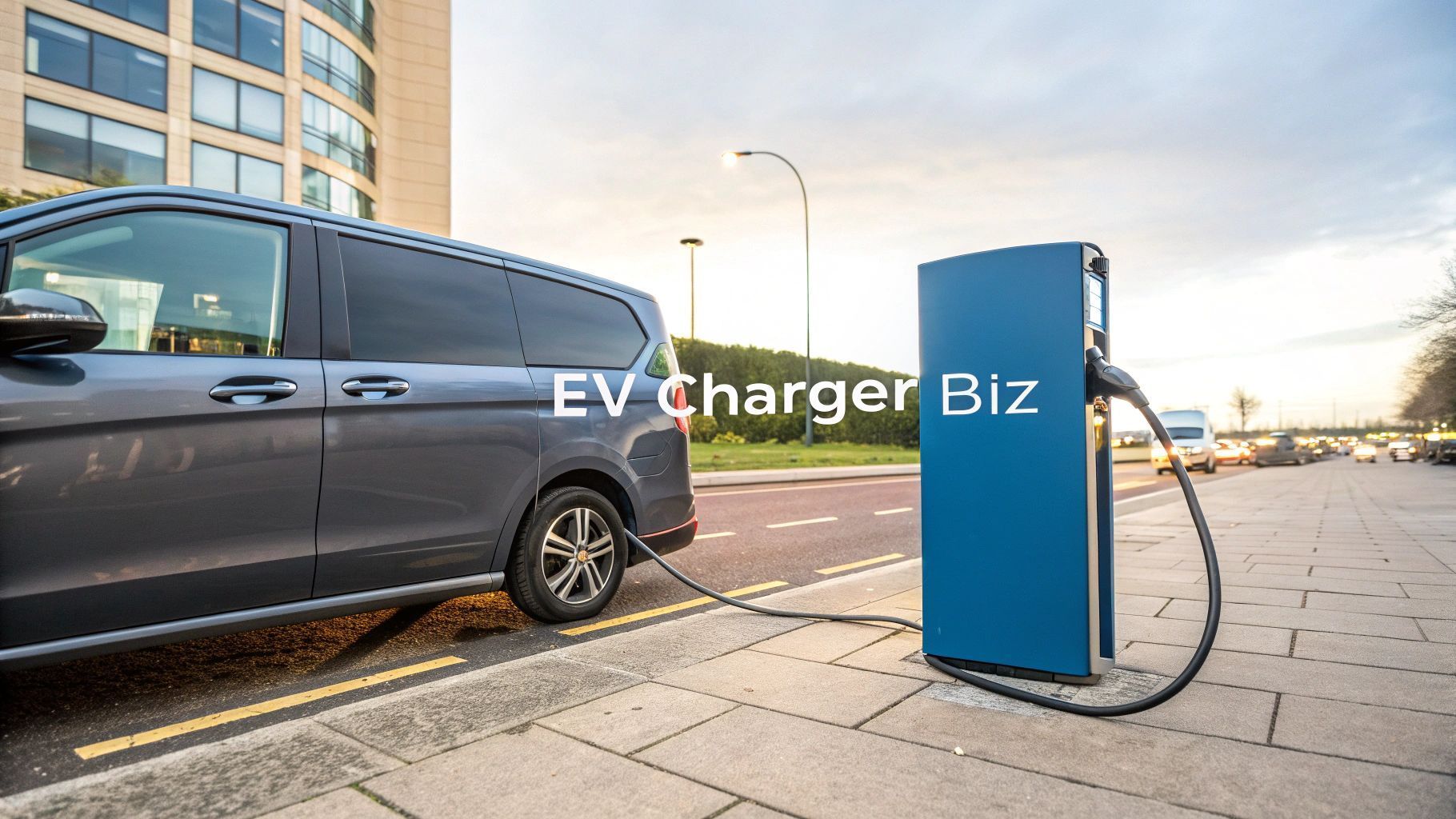UK's Top Sustainable Transportation Solutions
When people talk about sustainable transportation, they are not just talking about swapping a petrol car for an electric one. It is a much bigger idea. Think of it as a complete rethink of how we move people and goods around, focusing on solutions that are clean, green, and have a low impact on the environment. It is about building a smarter, more efficient network from the ground up.
Understanding Sustainable Transportation in the UK
To get a real sense of why this matters, it helps to see the scale of the challenge we are facing in the UK. This is not about a few small tweaks; it is more like upgrading an old, clunky home electrical system to a modern smart grid. We need an upgrade that powers everything more effectively and with far less waste.
The urgency is undeniable when you look at the numbers. Transport is the UK's single biggest source of carbon emissions, responsible for a massive 34% of total emissions in 2022. Road transport is the main culprit here. While the UK has made progress in cutting emissions overall, the transport sector has barely budged. If we are serious about hitting our climate targets, cleaning up how we travel is non-negotiable. In fact, surface transport is expected to deliver nearly 30% of the required emission cuts by 2030.
The Core Pillars of Greener Travel
This new approach to transport is built on three core pillars. Each is essential and they all work together to create a Britain that is cleaner, quieter and more economically sound.
- The Electric Revolution: This is the widespread shift to electric vehicles (EVs), covering everything from personal cars and delivery vans to buses and trains. A reliable and easy-to-use charging network is the backbone of this transition.
- Empowering Active Travel: We need to make it an easy and safe choice for people to walk or cycle for shorter journeys. That means creating convenient, appealing routes that make leaving the car at home the natural thing to do.
- A World-Class Public Transport Network: Investing in efficient, affordable and reliable public transport is crucial. Better buses and trains mean fewer private cars clogging up our roads.
By weaving these elements together, we can build a transport system that not only helps us meet our environmental goals but also boosts public health, slashes congestion and supports a stronger economy.
Ultimately, getting this right is fundamental to building the smart cities of the future. As our urban areas continue to grow, an efficient and green transport network is not just a "nice-to-have"—it is a necessity. For a closer look at how these ideas fit into the bigger picture, check out our guide on integrating these principles into urban planning for smart cities.
The Electric Revolution Powering Britain Forward
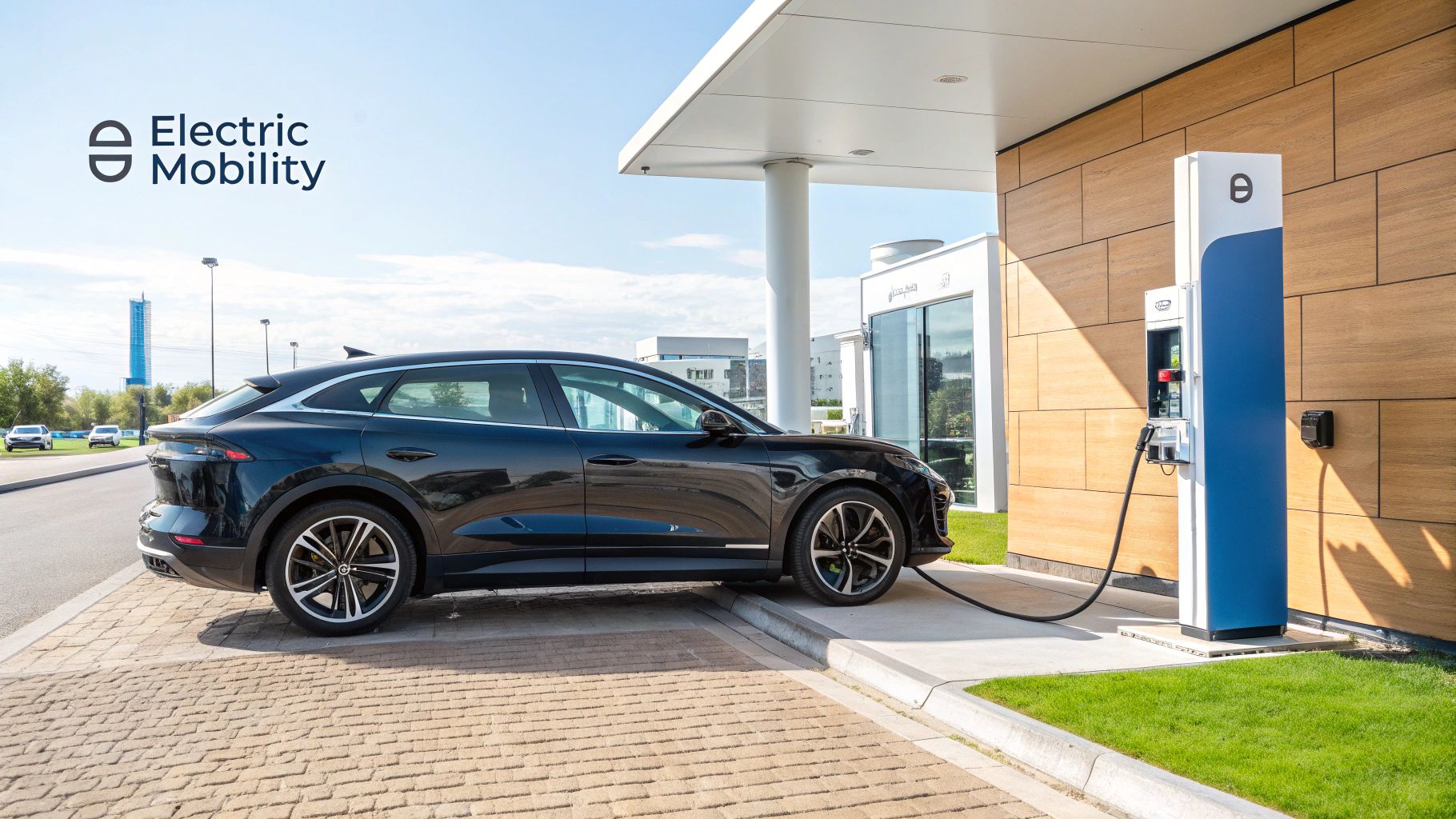
The drive to electrify Britain's transport network is picking up serious speed. This is not just about swapping your family car for an EV; it is a massive shift that touches everything from public transport to the logistics that keep our economy moving. It is a ground-up change steering the country towards cleaner, smarter ways to get around.
One of the most visible changes is happening on our railways. There is a major push to replace old diesel trains with modern electric ones, a move that directly cuts emissions and noise pollution in one go. By 2025 , this transition should be well underway, especially in the South East, where diesel trains are set to be largely phased out. Add autonomous trains into the mix on certain lines and you have got a recipe for even greater efficiency, making rail a true cornerstone of our sustainable future.
The Rise of the Electric Vehicle Ecosystem
While upgrading our trains is vital, the real headline act is the explosive growth of the electric vehicle (EV) ecosystem. We are talking about everything from the car on your driveway and the local delivery van to entire fleets of city buses. As more of us make the switch, the need for a robust, reliable charging network becomes absolutely critical.
This infrastructure is the backbone of the electric revolution. Plain and simple. Without easy access to charging, the whole thing grinds to a halt. We are seeing a huge effort to install static charging points in cities, at workplaces and along motorways. But this fixed network is not a silver bullet. It has its limits, particularly in remote areas or packed urban centres where finding space for new chargers is a real headache. You can learn more about this network by exploring our guide on https://www.zapme.biz/understanding-the-uks-public-ev-charging-point-networks-in-2025.
The success of the electric revolution depends entirely on our ability to provide power where and when it is needed. A flexible approach is essential to support the growing number of EVs on British roads.
This is where mobile charging really comes into its own. Think of it as a power bank for your car, delivered right to you. This kind of service tackles one of the biggest hurdles for would-be EV buyers head-on: range anxiety . That nagging fear of running out of juice miles from a charger is a real concern but mobile solutions offer the perfect antidote.
Mobile Charging: A Flexible and Profitable Solution
Mobile charging is more than just an emergency lifeline; it is a massive business opportunity. For an operator running a mobile charging unit, it is a chance to generate serious income by offering a service that fixed infrastructure just cannot match. The ability to deliver a charge anywhere—to a stranded driver, a busy office car park or a fleet depot—opens up multiple, high-value revenue streams.
Just think about the earning potential for an operator:
- Emergency Call-Outs: Helping an EV driver who has run flat is a premium service. Operators can charge a call-out fee on top of a per-kWh rate for the energy they supply.
- Workplace Charging: Companies can book a mobile charger to top up employee vehicles during the day. It is a fantastic perk that saves them the cost and hassle of installing their own charge points. This can be run as a subscription or a simple pay-as-you-go service.
- Fleet Services: Commercial fleets, like delivery vans or taxis, have to keep moving to make money. Mobile charging lets them recharge during downtime without having to return to a central depot, keeping vehicles on the road and earning.
For a look at how other regions are tackling the huge task of electrifying commercial fleets, check out California's EnergIIZE Fast Track for fleet electrification. This flexibility and income potential make mobile charging a genuinely lucrative venture. Operators can make a significant amount of money by filling the gaps left by traditional static chargers, turning a common driver anxiety into a profitable and sustainable business.
How Mobile EV Charging Creates a Business Opportunity
Beyond just supporting the switch to electric cars, mobile EV charging is shaping up to be a genuinely profitable business model in its own right. It is more than a simple convenience; it is a flexible, on-demand service that opens up several ways to generate real income. For an operator, a single mobile charging van can be the key to building a successful business, tapping into a market that fixed charging points often cannot reach.
The whole opportunity is built on one simple idea: providing power exactly where and when it is needed most. The trick is to offer a range of services that solve different problems for EV drivers, whether that is an urgent roadside rescue or a routine top-up at the office. Each of these services becomes a distinct and reliable source of revenue.
Building a Profitable Service Model
The financial muscle of a mobile charging business comes from its sheer versatility. Operators are not stuck serving just one type of customer; they can cater to individual drivers, corporate clients and entire commercial fleets. This flexibility is what really maximises earning potential and builds a resilient operation.
Here are the main services that form the foundation of this business model:
- Emergency Roadside Assistance: This is the premium, high-demand service. A stranded EV driver with a dead battery is more than willing to pay for a fast, hassle-free solution. Operators can charge a call-out fee plus a per-kWh rate for the energy, turning a driver's headache into a profitable job.
- Convenient Workplace Top-Ups: Lots of businesses want to offer EV charging as an employee perk but are put off by the high cost and disruption of installing fixed chargers. A mobile operator can offer a scheduled service, visiting the workplace to top up multiple vehicles at once, creating a steady, contract-based income.
- Scheduled Fleet Charging: Commercial fleets, like delivery vans or taxis, lose money every minute their vehicles are sitting idle. Mobile charging allows them to recharge during downtime anywhere they happen to be, without having to return to a central depot. This boosts their efficiency and creates a lucrative B2B revenue stream through regular contracts.
The core advantage is flexibility. A mobile charging operator can go where the demand is, whether that is a music festival, a remote tourist spot or a new housing estate without any charging points yet.
This model provides a clear path to profitability. For a detailed breakdown of the numbers behind this business model, you can explore the economics of mobile EV charging in a deep dive into ZAPME's model.
Projecting the Financial Returns
So, what does the earning potential actually look like? An operator's revenue is a direct result of the services they provide, mixing one-off jobs with recurring contracts. The pricing usually involves a fixed call-out or service fee plus a variable charge based on the amount of energy delivered (per kWh).
Let's picture the income for a single mobile charging van. The total revenue will depend on the mix of jobs, with emergency call-outs typically bringing in a higher margin. However, it is the fleet contracts that provide the stable, predictable income that is so vital for long-term planning.
This table gives a rough idea of what a single van could generate, based on some key assumptions.
Potential Annual Revenue for a Mobile EV Charging Operator
This table illustrates a hypothetical annual revenue projection for a single mobile charging van, breaking down income streams and outlining key operational assumptions.
| Revenue Stream | Jobs Per Day (Avg) | Price Per Job (£) | Annual Revenue (£) |
|---|---|---|---|
| Emergency Roadside Assistance | 1 | 90 | 32,850 |
| Workplace Top-Ups | 4 | 35 | 51,100 |
| Fleet Charging Contracts | 2 | 50 | 36,500 |
| Total | 7 | - | £120,450 |
Of course, these are just projections but they highlight the solid financial foundation this business model offers by blending different types of service. The reality is our operators earn £199 for a recovery so these numbers are deliberately conservative.
The image below shows how smart transit solutions rely on dependable and flexible energy sources—exactly what mobile charging provides.
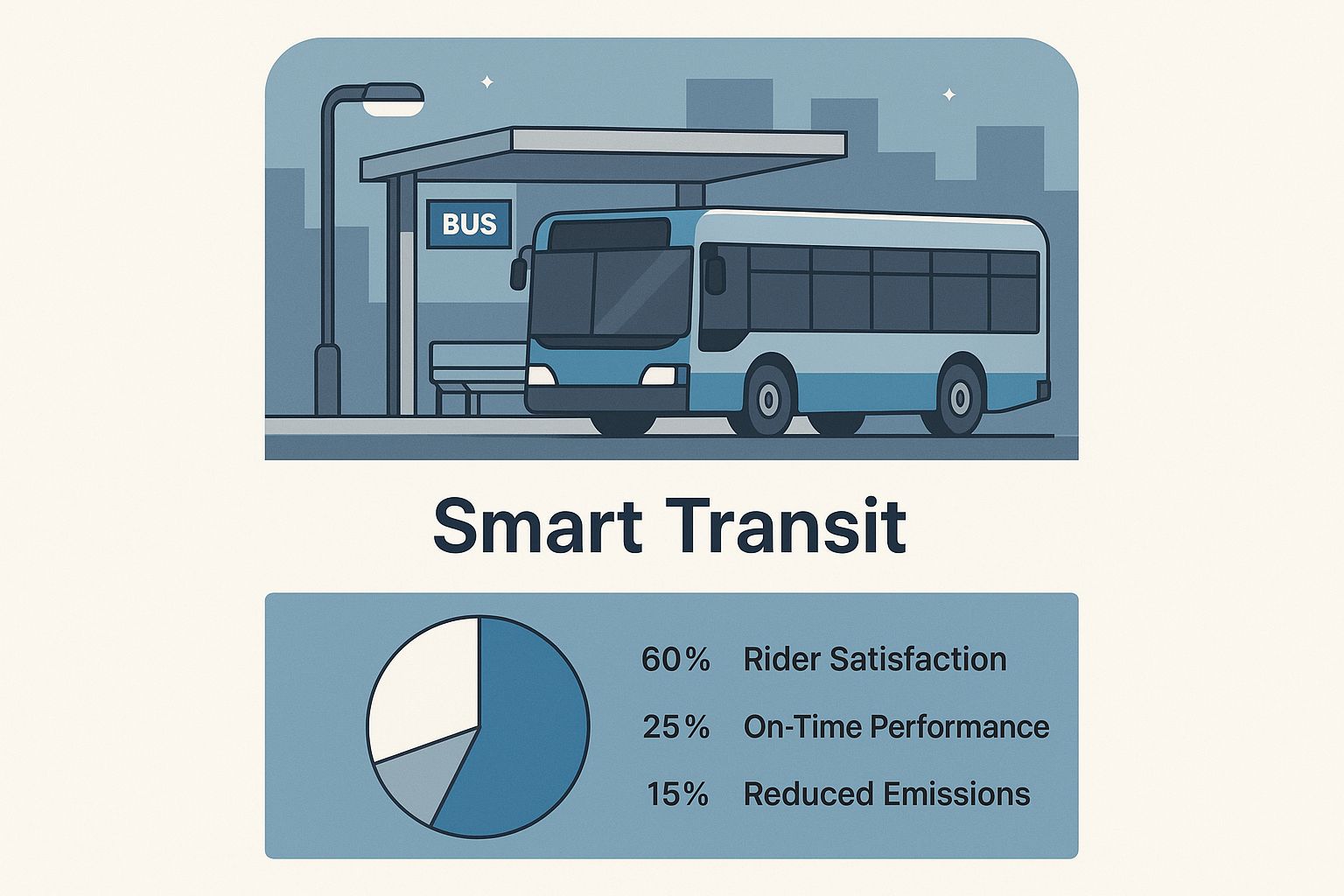
This kind of smart transit hub perfectly illustrates the need for efficient, on-demand energy in modern cities, a gap that mobile charging is perfectly positioned to fill.
Balancing Investment Against Operating Costs
Of course, profitability is not just about revenue—you have to balance it against your costs. The initial investment covers the mobile charging unit and the vehicle itself. Then you have ongoing costs like energy to charge the unit, vehicle maintenance, insurance and fuel.
But even with these costs, the margins can be very attractive. You can buy energy at off-peak rates, often for just a few pence per kWh, and then sell it on to customers at a significant mark-up. A well-run operation with a steady flow of jobs can see a return on its initial investment surprisingly quickly.
The market is growing at a phenomenal rate, with more EVs hitting UK roads every month, meaning demand for these services is only going to climb. For businesses and entrepreneurs, pairing charging with renewable energy presents a huge opportunity. You can learn more about maximising profitability by understanding the financial sense of pairing EV charging stations with solar. This strategy can slash operating costs even further and boost your green credentials, making your business an even more compelling option.
Rethinking Journeys with Active and Public Travel
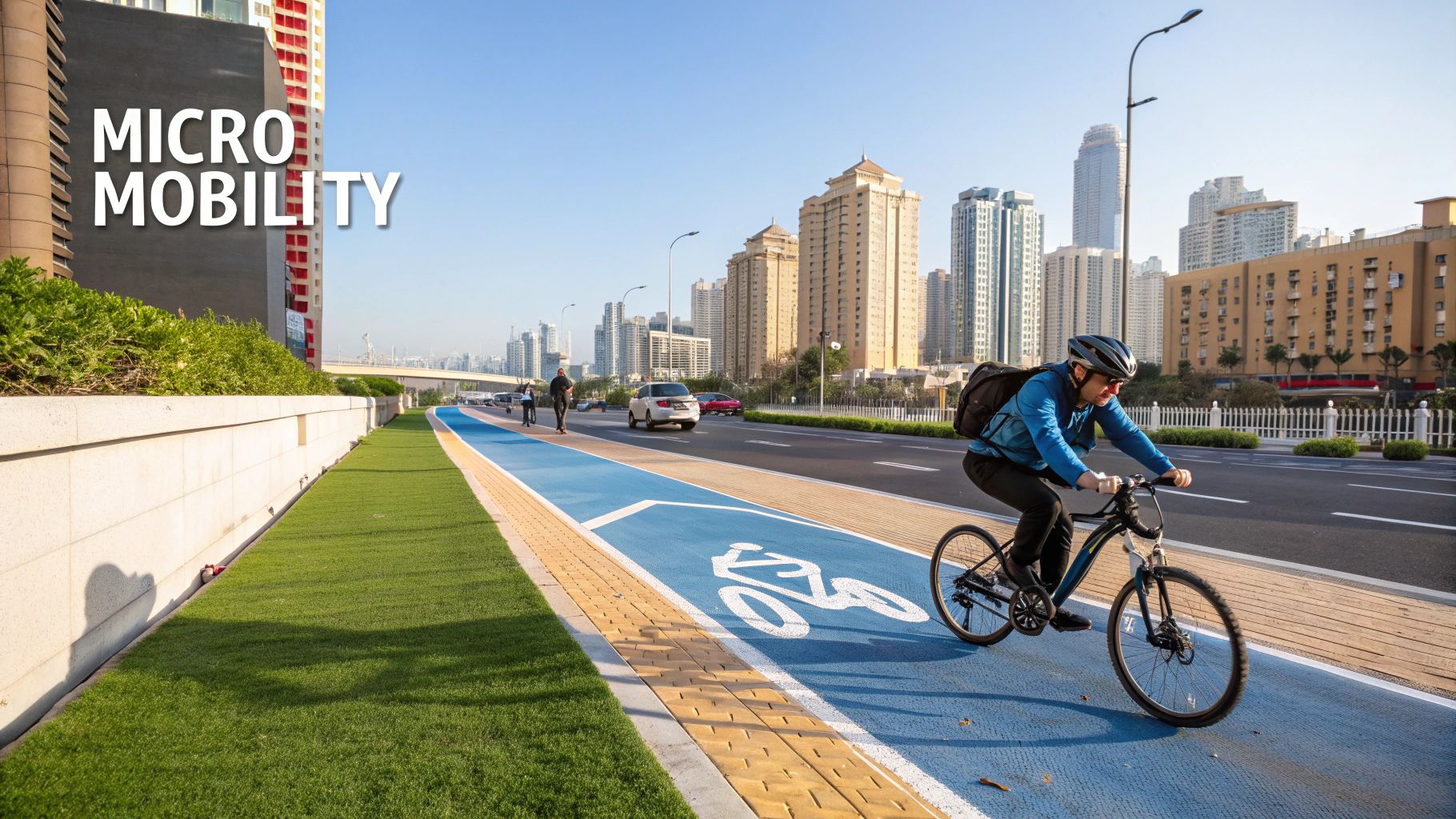
A truly effective sustainable transportation network is about more than just swapping petrol cars for electric ones. It demands a fundamental rethink of our daily journeys, encouraging a cultural shift away from relying on private cars altogether. The goal is to build a system where leaving the car at home is not a sacrifice—it is the most sensible, attractive and even enjoyable option.
This is where active travel and modernised public transport become the heroes of the story. Working in tandem, they reduce congestion, clean up our air and build healthier, more connected communities. This two-pronged approach tackles short local trips and longer commutes at the same time, creating a powerful alternative to private car ownership.
Championing Active Travel for Healthier Journeys
Active travel—mainly walking and cycling—is one of the most powerful tools we have for building a greener transport future. It turns short, mundane car journeys into opportunities for physical activity, shrinking our carbon footprint while improving public health. The key is making these options safe, accessible and genuinely appealing for everyone.
Recognising this potential, the UK government is making a serious financial commitment. Its broad sustainable transport plan dedicates over £2 billion to improve cycling and walking infrastructure between 2020 and 2025. This investment is designed to hit an ambitious target: making half of all journeys in towns and cities by foot or bicycle by 2030.
The impact is already showing. During the COVID-19 pandemic, cycling levels in England surged by 46% —the largest increase since the Second World War. You can dig deeper into the government's strategy in their official decarbonisation plan , which details the investment in active travel and bus network overhauls.
This funding is creating tangible improvements on the ground, including:
- Segregated Cycle Lanes: Creating physically protected routes that separate cyclists from motor traffic, making cycling feel much safer, especially for families and new riders.
- Low-Traffic Neighbourhoods: Redesigning residential streets to prioritise people over cars, which cuts down on "rat-running" and creates quieter, safer spaces for walking and playing.
- Improved Pedestrian Crossings: Making it easier and safer for people to cross busy roads, encouraging more local trips on foot.
The Transformation of Public Transport
While active travel is perfect for shorter trips, a world-class public transport system is essential for longer commutes and connecting communities. For too long, bus services in many parts of the UK have been seen as a last resort but that perception is changing thanks to major investment and a clear national strategy. The focus is now on making buses faster, more reliable and completely emission-free.
A modernised bus network is the backbone of a fair and effective sustainable transport system, providing an affordable and convenient alternative to the private car for millions of people.
To make this a reality, the government is injecting £3 billion into a complete overhaul of the bus industry. This investment supports the rollout of thousands of new zero-emission buses powered by electricity or hydrogen. These cleaner, quieter vehicles do not just cut carbon emissions; they drastically reduce local air and noise pollution, making our town and city centres far more pleasant places to be.
On top of that, the funding is being used to implement bus priority lanes on key routes. These dedicated lanes let buses bypass traffic jams, ensuring journeys are quicker and more punctual. When public transport is demonstrably faster and more reliable than driving, it naturally encourages people to leave their cars behind. Together, these efforts are making car-free travel a genuinely attractive choice, transforming how we move and live.
Tackling the Bumps on the Road to Greener Travel
The journey to a fully sustainable transport future in the UK is a big one and it is certainly not without its challenges. Turning this vision into reality means facing some significant hurdles head-on, from the initial cost of new technology to the tricky logistics of building out infrastructure on a national scale.
One of the biggest roadblocks for many is the upfront cost of electric vehicles. While it is true that running an EV is much cheaper than a petrol or diesel car, the ticket price can still feel steep for individuals and businesses. This financial barrier can slow down the pace of adoption, even when people are keen to make the switch.
Then there is the monumental task of creating a charging network that is both comprehensive and reliable. Installing fixed charge points is a real logistical puzzle, especially in dense cities with limited pavement space or in remote rural areas. The goal is a network where drivers can find a charger wherever and whenever they need one—a massive undertaking.
Getting Past the Financial and Infrastructure Hurdles
Fortunately, these are not impossible problems. Practical and effective solutions are already being rolled out to tackle them. To make EVs more affordable, for example, the UK government has brought in various grants and incentives. These schemes help to lower the purchase price of new electric cars and vans, putting them within reach for more people.
When it comes to the infrastructure puzzle, smart grid innovations are becoming a game-changer. These systems help manage energy demand more intelligently, making sure the electricity grid is not overwhelmed as thousands of new EVs plug in. It is a clever way to balance supply and demand without needing hugely expensive grid upgrades.
The move to sustainable transport is not about finding one magic bullet. It is about weaving together multiple strategies—financial incentives, tech innovation and community support—to clear obstacles one by one.
Mobile charging also plays a vital part. By bringing the charge directly to the vehicle, mobile units can fill the gaps in the fixed network. They offer a crucial service in places where permanent chargers are impractical or have not been installed yet, making sure no driver is left stranded.
Shifting Mindsets and Changing Habits
Of course, technology and infrastructure are only half the story. A truly successful shift also hinges on people being willing to change long-held travel habits. For decades, the private car has been the default choice for most journeys and shifting this mindset takes a thoughtful, sustained effort.
Public reluctance often comes from a few key worries. Some people are concerned about the reliability of new technologies, while others are simply comfortable with what they already know. To get everyone on board, we need to communicate the benefits clearly and make the alternatives as convenient and appealing as possible.
This is where community engagement strategies are so important. Local authorities are running campaigns to highlight the upsides of active travel, like better health and less traffic. They are also working with public transport operators to make bus and train services more reliable and easier to use.
Here is how these strategies are making a difference:
- Demonstration Days: Letting people test-drive EVs or try out new e-bikes helps to demystify the tech and show just how easy it is to use.
- Community Forums: Holding public meetings to discuss proposed changes, like new cycle lanes, gives residents a voice and helps build local support.
- Personalised Journey Planning: Offering services that help people find the best public transport or cycling routes for their daily commute can make the switch feel much less daunting.
Ultimately, building a greener transport network is a team effort. It demands smart planning from policymakers, investment from businesses and a public that is open to embracing new ways of getting around. By tackling each challenge with targeted solutions, the UK can successfully navigate the road to a cleaner, healthier and more sustainable future.
What Does the Future of UK Mobility Look Like?
The journey towards a sustainable transport network is starting to paint a very different picture for Britain. It is a future where our daily travel no longer comes at the expense of our environment but actually helps create healthier, more connected communities. This vision is being built today, through the combined power of vehicle electrification, active travel and a much-needed revitalisation of public transport.
Imagine quieter cities where the gentle hum of electric buses has replaced the roar of diesel engines. Picture streets where children can safely cycle to school and rush-hour traffic jams have eased because the train and bus services are finally reliable and efficient. This is not some far-off dream; it is the real, tangible outcome of the sustainable transport solutions being rolled out across the UK right now.
A More Connected and Cleaner Britain
The shift brings benefits that go far beyond just hitting our climate targets. By creating a system that puts people ahead of cars, we are actually building a more connected and resilient society.
- Cleaner Air: The widespread switch to electric vehicles, along with simply making fewer car journeys, directly cuts down on harmful pollutants. That leads to massive improvements in public health.
- Healthier Communities: Making walking and cycling the obvious, easy choice for short trips gets people moving and reduces our reliance on sitting in a car.
- Economic Prosperity: An efficient, modern transport network lowers logistical costs for businesses and creates thousands of new jobs in green technology and infrastructure.
This is a future where the UK is not just a leader in environmental responsibility but is also a more pleasant, efficient and economically robust place to live and work.
This positive change is already happening but keeping the momentum going depends on a continued commitment from everyone. Individuals, businesses and policymakers all have a vital role to play in pushing this transformation forward.
Every time we choose to walk, cycle, use public transport or switch to an EV, we are each contributing to that shared goal. Investing in a transport system that benefits generations to come is not just a policy choice—it is a collective responsibility and a remarkable opportunity.
Frequently Asked Questions
How Much Money Can a Mobile Charger Operator Make?
The earning potential for a mobile charging operator is substantial, though it really depends on the business model you choose. Revenue typically comes from a blend of emergency call-out fees, per-kilowatt-hour energy sales and recurring contracts for services like workplace or fleet top-ups.
With a smart mix of these income streams, a single van could realistically generate over £100,000 each year. Emergency roadside assistance for a stranded EV driver will always command a premium, while regular contracts with local businesses provide a stable, predictable income. That flexibility is the key to maximising your earnings as part of the growing network of sustainable transportation solutions .
What Are the Real Costs of Running an Electric Vehicle?
While the initial price tag of an EV can be higher than a similar petrol car, the day-to-day running costs are dramatically lower. Charging an EV at home, especially on an off-peak electricity tariff, is far cheaper than filling a tank with petrol or diesel. For the average driver, this can mean saving hundreds of pounds a year.
It does not stop there. EVs have far fewer moving parts in their motors, which translates to simpler and less expensive maintenance. Forget about oil changes, spark plugs or exhaust systems. When you add in the savings from tax exemptions and avoiding city congestion charges, the total cost of ownership becomes incredibly competitive.
The financial benefits of switching to an EV extend far beyond fuel savings. Lower maintenance and tax exemptions make them a compelling long-term investment for many UK drivers.
Is There Government Support for Greener Travel?
Yes, absolutely. The UK government offers several incentives to encourage people to adopt more sustainable transport. These include grants that bring down the upfront cost of buying certain new electric vehicles and funding to help with the installation of home charging points.
There is also a huge investment going into public infrastructure. This is funding things like safer cycling and walking routes and the rollout of thousands of new zero-emission buses across the country. All these programmes are designed to make greener travel options more accessible and affordable for everyone.
Ready to become part of the solution and explore a profitable business opportunity? ZAPME offers pioneering mobile EV charging units that empower you to deliver on-demand energy wherever it is needed. Discover how our technology can help you launch your own mobile charging business at https://www.zapme.biz.

